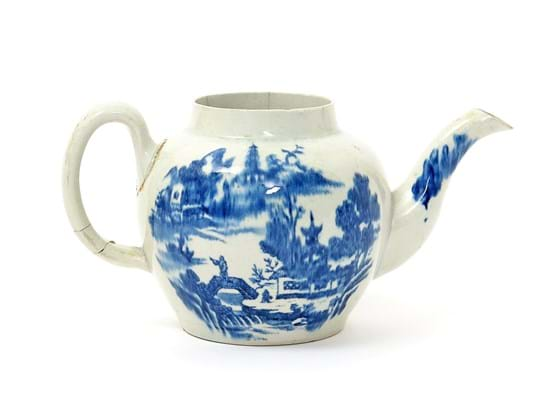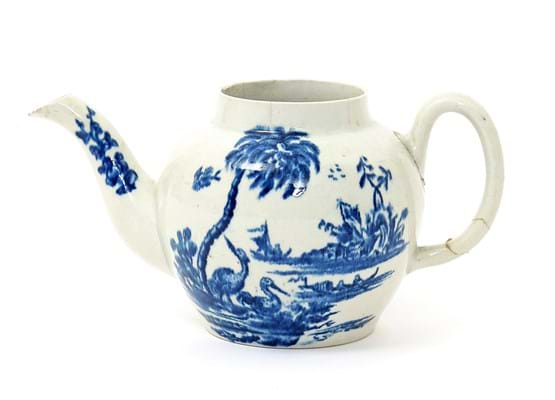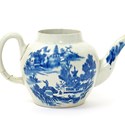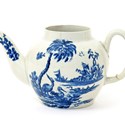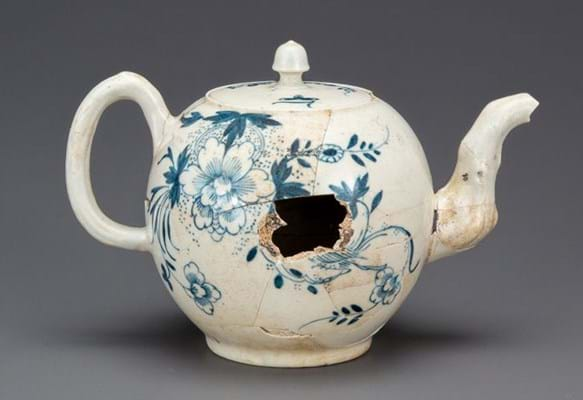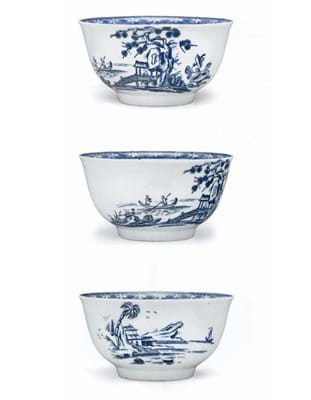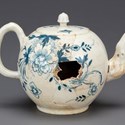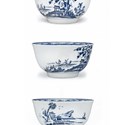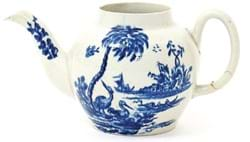But, as the discovery of a previously unrecorded teapot suggests, there was another story – perhaps other stories - to be told.
For years, scholars had been aware that an enigmatic Staffordshire potter, John Bartlam, had sailed to South Carolina around 1763 in the hope of mining the abundant raw materials found in the region.
His factory was based first in Cain Hoy, on the Wando river near Charleston, from 1765, and then in the port city itself from 1770 until 1773 when Bartlam returned to England.
But exactly what he had made in South Carolina was mere speculation until the Cain Hoy site was located in 2007. There a team of archaeologists from the South Carolina Institute of Archaeology recovered not just fragments of creamware but also sherds of a translucent, low-fired phosphatic soft-paste porcelain.
Of particular interest were the fragmentary wasters of three blue-decorated teabowls, each painted to the rim with a triple trellis border and transfer-printed with previously unknown landscape vignettes.
The findings knocked into a cocked hat the notion that the 19 pieces of porcelain surviving from the American China Manufactory were the first produced on the continent. In fact it emerged Bonnin and Morris had taken adverts in the Charleston press in the hope of head-hunting Bartlam's employees.
But had any finished vessels survived?
In 2010, the London-based English porcelain specialist Roderick Jellicoe spotted an intact Bartlam teabowl in a British collection - identifying it from the distinctive transfer-printed decoration found on sherds at Cain Hoy.
In April 2010, after scientific and visual analysis confirmed the discovery, he sold it to the Chipstone Foundation in Milwaukee for a price thought to be in the region of $50,000- $75,000. Shortly afterwards ceramics historian Robert Hunter penned an article in The Magazine Antiques in January/February 2011.
"This newly-discovered 18th century teabowl, a modest object by any measure, represents the earliest intact example of American-made porcelain," he wrote. "Its discovery reflects the dynamic nature of decorative arts scholarship, where the next turn of the spade or opening of a forgotten drawer might bring a piece of the past back to life."
Hunter hoped that more Cain Hoy porcelain might emerge on the market and, indeed, one teabowl soon became four teabowls and a saucer. Again Britain was the source.
The publication of the new discovery on the Chipstone's website was doubtless of interest to the various UK private collectors who had bought three idiosyncratic teabowls from Jupiter Antiques of East Sussex in 2004. At the time they were sold as Isleworth (the short-lived London factory that itself only arrived on the collecting map in the late 1990s) but reattribution moved them into an altogether different financial league.
While none of the bowls was in perfect condition, one was sold to the Philadelphia Museum of Art in 2012 for $75,000, while another described as 'the property of an English collector' - was offered for sale by Christie's New York as part of an Americana sale in January 2013 with an estimate of $30,000-50,000. There it sold at $120,000 (£76,000) - or $146,500 including buyer's premium.
What else is out there? Two saucers that appeared in the 2013 Isleworth catalogue are now also thought to be American. Sharing the same painted triple trellis border as the teabowls, one is decorated with a version of the the Man on the Bridge pattern, the other with a scene of two cranes beneath a tall palm tree beside and figures in a sampan. The recently-discovered teapot, shortly to be offered for sale at Woolley & Wallis, carries both of these vignettes.
More discoveries continue to shed light on the embryonic days of porcelain production in America in the era of the Nonimportation Agreements and calls to boycott English goods.
The excavations in Philadelphia on the site of the new Museum of the American Revolution have yielded rich deposits of 18th-century material culture - including two examples of a previously unknown American hard-paste porcelain from the period 1765-70.
A fragmentary punch bowl exhibited last year at the New York Ceramics & Glass Fair will be followed at this year’s event (January 18-21, 2018) with the display of a blue and white teapot. The findings will be discussed in depth in an upcoming article in Ceramics in America.


